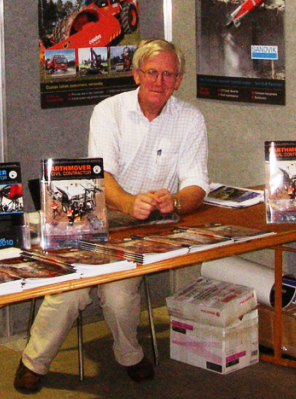I was drafted to represent the Hereford Society on the voyage and on arrival in Santiago, to spend three months at that city's show ground, preparing the stud animals and then showing and selling them at the capital's annual agricultural show. But that is another story and a successful one.
Not so the fate of the Hereford heifers.
There had been a moderately severe drought in many parts of Victoria and New South Wales which had made it difficult for Dalgety, the buying and shipping agency, to acquire the most suitable cattle to be exported. In any event its agents bought in-calf heifers largely from New England, on the proviso that they would not calve until some months after they arrived in Chile.
The cattle, with considerable feed, were uneventfully loaded on the 7000 tonne Danish owned ship the Cimbria in Sydney.
But we were only an hour or so outside Sydney when the engines stopped. Then we heard the ship would have to be towed back.The engine had failed because it had been serviced in Sydney and the huge pistons had been chromed when they should not have been. So the cylinder heads came off and men with angle grinders worked for a week removing chrome.
The cattle remained on board and we again set sail, this time without stopping as we ploughed our way across the South Pacific.
But only a week or so after leaving Sydney, the heifers started calving and I and my two colleagues - one was Terry Ryan from Finley who now lives in Benalla - were hard pressed as we helped the many heifers having difficulties producing their first calves. In rough weather it was quite an experience doing the All Creatures Great and Small arm inside the heifer where is the calf thing, while feeling miserably seasick.
While this was bad enough, the feed supplied, while from a reputable miller, was fairly liberally polluted by bale hooks, vicious barbed devices for holding wool bales closed. The cattle ate these with the feed and they tended to lodge at the bottom of one of the stomachs which was very close to the heart. This caused quite a few deaths.
After three weeks we arrived in Concepcion and the commercial heifers and their calves were unloaded and held on a quarantine farm. Luckily our stud cattle went straight to the showground which was effectively their quarantine area.
Now foot and mouth disease was a problem in South America and the cattle had to be vaccinated. But being patriotic Chlieans, the local vets would not use an excellent vaccine made by Coopers in Argentina. Instead they opted for what I was told was a live brew cooked up in Santiago backyards. The end result was that many of the cattle died of foot and mouth while in quarantine; fortunately we were able to wangle some of the Cooper product for our 12 strong show team.
It was at this stage that I felt obliged to report what had been going on to the secretary of the Hereford Society, my boss. I pulled no punches, so was horrified to find that the Society had reproduced my letter and mailed it to the several hundred members of the Society around Australia. I was then told by Mike Frost, the Chilean Dalgety representative that the second in charge of Dalgety Australia, was on his way to Chile and as the saying goes, wanted my guts for garters. Fortunately for me my report had been accurate and I never heard a cross word from anyone in Dalgety.
The whole exercise was most unfortunate because it was funded by the United Nations to enable the Chileans to produce more beef. At the time it was illegal to eat beef for three days a week and we often ate horse meat instead.
Strangely enough, my brother the following year accompanied a shipment of Herefords to South Africa. While in a taxi in Durban he was offered an Australian passport for a considerable sum.
He reported (blew the whistle) on the incident to the Australian embassy, demonstrating whistle blowing skills he continued to draw upon throughout a most adventurous working life!
David Palmer
October 2015


 RSS Feed
RSS Feed
